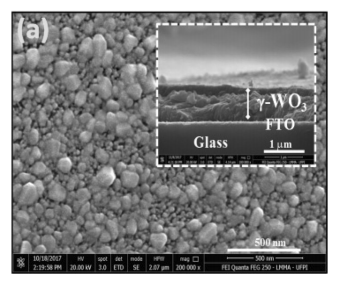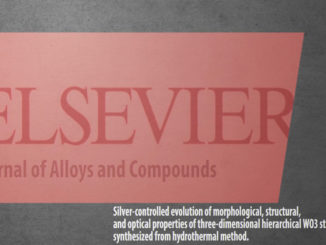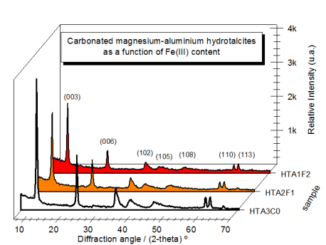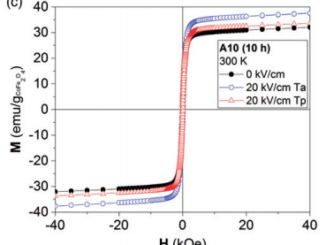
Investigation of charge recombination lifetime in gamma-WO3 films modified with Ag-0 and Pt-0 nanoparticles and its influence on photocurrent density
Abstract: In this communication, we report the growth of pure gamma-phase tungsten oxide (gamma-WO3) films on a conducting substrate (fluorine-doped tin oxide), followed by heat treatment at 500 A degrees C for 2 h, and finally modification with either silver (Ag-0) or platinum (Pt-0) metallic nanoparticles. These gamma-WO3 thin films can be obtained from a tungsten citrate solution by a drop-coating method, and their surfaces are modified with Ag-0 and Pt-0 nanoparticles by photoreduction. X-ray diffraction analysis indicates that all the thin films have a monoclinic structure. Field emission-scanning electron microscopy analysis reveals large and fine grains for pure gamma-WO3 film and modified WO3 films, respectively, with an average grain size of similar to 48 nm and thickness of similar to 986 nm. Finally, an enhancement in photoelectrochemical performance by a factor of similar to 2.5 is noted to modified gamma-WO3 films, which is attributed to superior electron-hole charge recombination lifetime under polychromatic irradiation. It is observed that, even under bias, an exponential reduction in photocurrent intensity is associated with charge recombination instead of mass transport conditions like diffusion.
Author(s): Costa, MJS; Costa, GS; Lima, AEB; Luz, GE; Longo, E; Cavalcante, LS; Santos, RS
IONICS
Volume: 24 Pages: 3291-3297 Published: OCT 2018
DOI: 10.1007/s11581-018-2640-1




